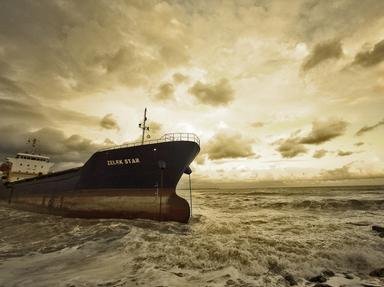Quiz Answer Key and Fun Facts
1. Our little spark is Jonas Jonah, born in the Cornish village of Mystringvest, and member of a long line of misfit mariners who had a happy knack of picking the likeliest ship to go down. He was snatched from his home by a group of pirates and sold to the Romans in 264 BC to be a galley slave in what naval war?
2. Our next Jonah descendant served on board a Tudor warship which was one of the first purpose built warships of the Royal Navy. After more than thirty years of service, she sank in the Solent while fighting the French on 19 July 1545. Said to be King Henry VIII's pride and joy, what was the name of this vessel?
3. About 43 years later, another Jonas sailed at the head of the English Navy against the Spanish Armada. This ship was funded by Sir Walter Raleigh and lent to the Navy by him. She was the first Ark Royal. What happened to the later, third, Ark Royal in 1941?
4. Some Jonahs travelled far and wide and this next one ended up in a whaling ship, 'The Essex'. Captained by George Pollard Jr, she was out of Nantucket hunting Sperm Whales. The ship was attacked and sunk by the whale in 1820 in the Pacific Ocean. If you think you've heard this one before, it's probably because this true incident inspired the book "Moby Dick". Who was the author?
5. "Women and children first!" - Jonas was too busy telling his captain the ship was slowing down (in 1852) to heed this command. But the soldiers who held fast on this ship would go down in history for their actions in not saving themselves before the women and children had been evacuated well away from the sinking ship. Kipling later wrote a poem called "The _____ Drill" She was named for the town where she was built, opposite the Mersey to Liverpool. What was her name?
6. Maybe it was just sheer coincidence that when this 'Great' ship ran aground at Dumdrum Bay, Ireland in November 1846, one of the crew was a certain J. Jonah.
What was this Goliath of Brunel's which was called?
7. Of our next Jonah, nothing much is known since he disappeared in mysterious circumstances which still intrigue conspiracy theorists today. What was the name of the deserted ship seen entering the harbour at Gibraltar one Friday 13th 1872?
8. This poor little Jonah found more than he bargained for when he signed on for a voyage to South America! There was a delay entering the port on the homeward journey towards the end of the 1880's. He watched with feverish speculation as the ship slowly hove to outside the harbour and ran up a yellow flag. What did this signal mean?
9. The Jonas Jonah of 1939 found himself in Liverpool for the launch of a new submarine - the third of the new 'T' Class boats built by Cammell Laird. Perhaps if he'd only been in another European city this tragedy might not have happened. What was the name of this 'other' craft with Liverpool connections?
10. Our last 'ship' was a change of direction for the Jonah line. Airships became the latest mode of travel, especially between Europe across the Atlantic and The USA. What terrible fate befell the Hindenburg at Lakehurst, New Jersey on Thursday,6 May 1937?
Source: Author
skumma
This quiz was reviewed by FunTrivia editor
bloomsby before going online.
Any errors found in FunTrivia content are routinely corrected through our feedback system.

